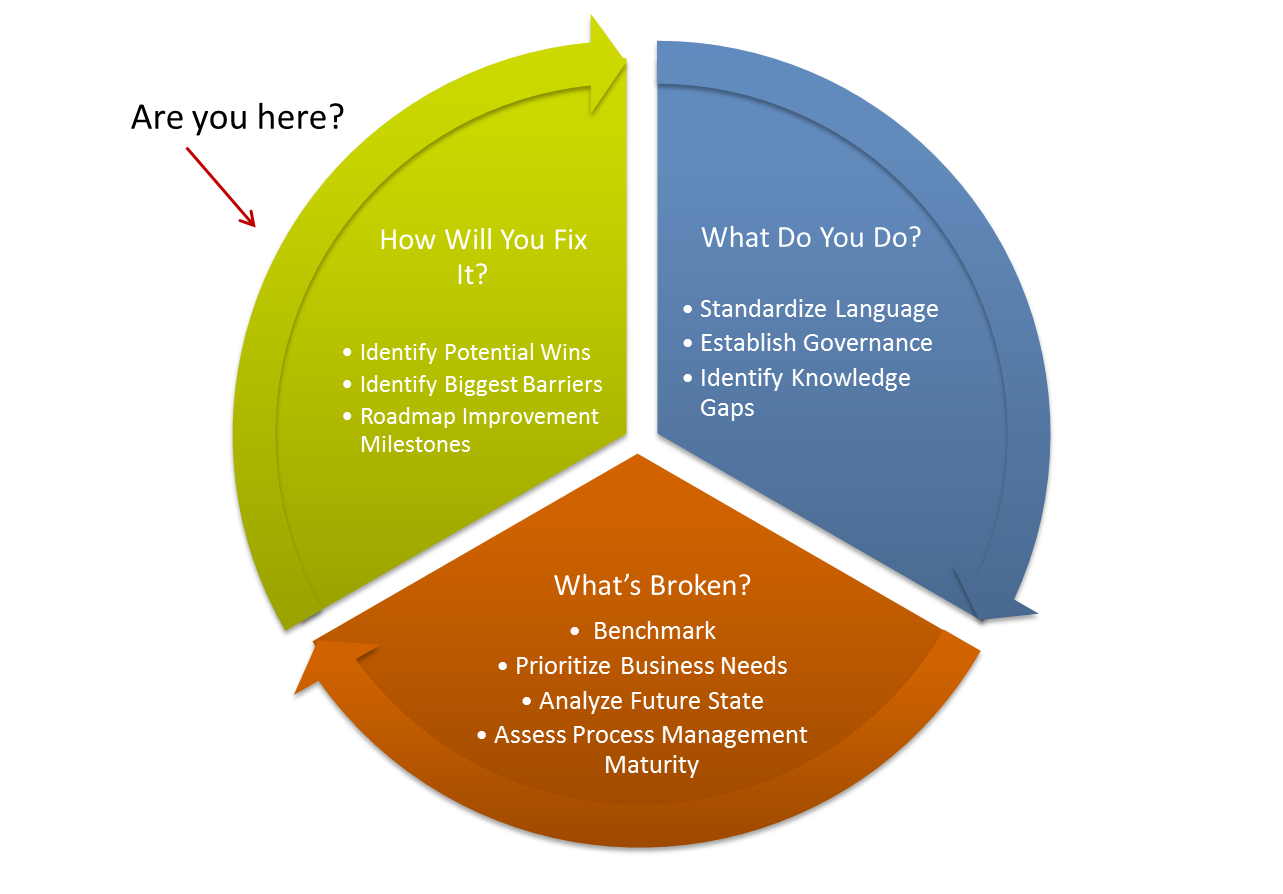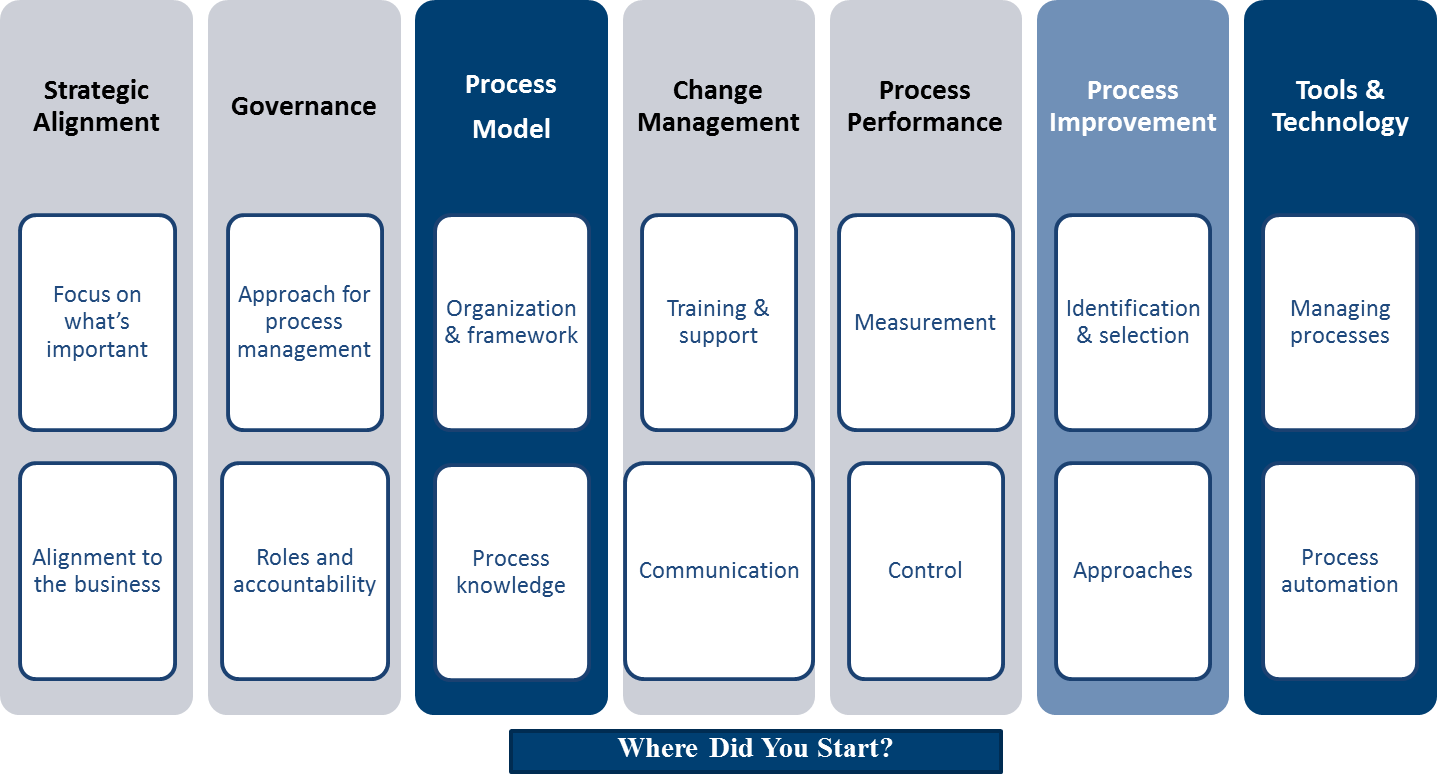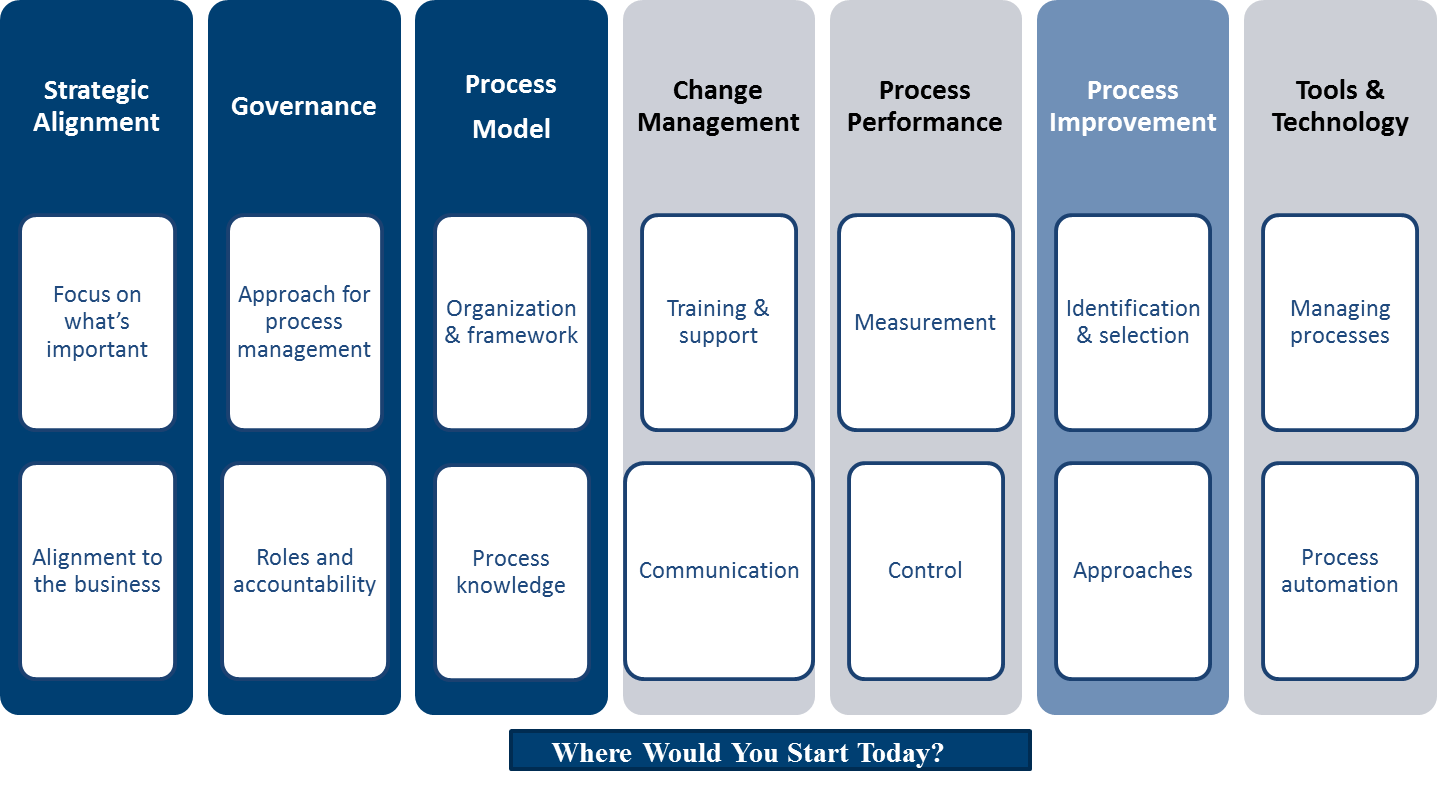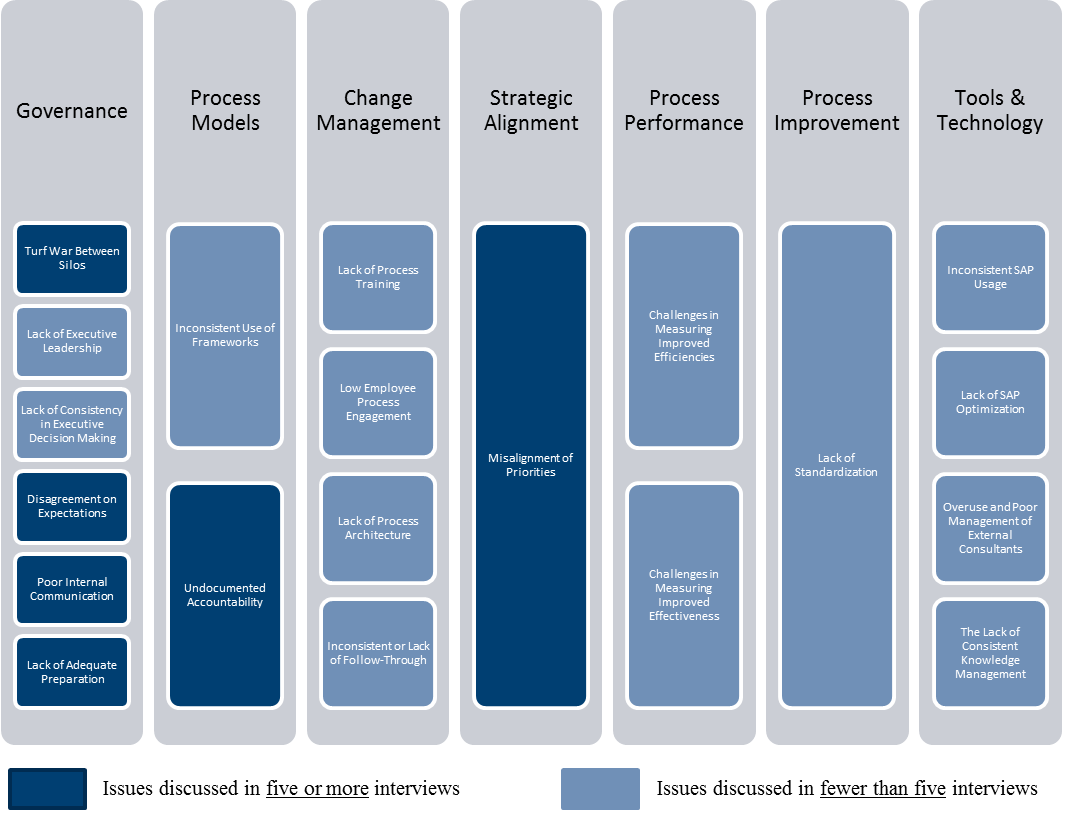Thus far in our blog series we’ve traveled two-thirds of the way through the process improvement cycle:
- identified what you do and how you do it,
- pinpointed which of the things that you do are broken, and
- figured out which are most broken and will need to be addressed sooner than later.
So, now we’re ready to start addressing the most broken problems, right? Maybe.
Process Management Cycle

At this point, do you know enough about why the processes are broken? If not, go back to those people you identified in the RACI chart and dig into the issues, including:
-
Pre/Post process dependencies. Consider the inputs and outputs identified in your SIPOC. Are they clear and readily accessible?
-
Handoff risks. Is it clear who hands off the process? The easiest way to identify when a process gets tossed over the wall from one business or functional silo to another is to look for places where the PCF numbers jump significantly out of sequence.
-
Single points of failure and pipeline constrictions. What are the risks if a single person were removed from the process or if a single supplier to the process has a delay?
-
The bigger foundational process management systems at your organization. Does the process lack a single, cross-functional owner? Does the owner know what ownership means? Is there an effective communication structure in place to disseminate , and if need be, train employees on any future changes? Are there technological barriers to success?
It’s that last piece that can prove to be your biggest barrier at this point.
APQC’s research has found that successful process management organizations all tend to focus on seven aspects of process management. At the end of the day, your processes will only be as strong as the weakest of what APQC calls the “Seven Tenets of Process Management”:
-
Strategic Alignment: validating that what you’re fixing is really crucial to the businesses’ top need(s) and not simply the pet project of the loudest executive.
-
Governance: assuring the approaches, roles and responsibilities of the process are clearly in place and all parties’ roles are well defined.
-
Process Models: depicting clear visual views of the process, its dependencies and attributes –including process flow maps, frameworks, knowledge maps, RACI and SIPOCs.
-
Change Management: systematizing the way by which you communicate and train employees on the changes you may make to how they do what they do)
-
Process Performance: measuring and controlling the benchmarks used to baseline performance, measure improvement, and monitor unintended consequences.
-
Process Improvement: identifying and prioritizing how you’re going to address sub-optimal processes.
-
Tools & Technology: IT enabling systems that, where necessary, automate parts of the processes, including the process mapping design tools, repositories, as well as ERP systems, etc.
That’s a lot to manage. And, if your process management approaches are relatively immature, you’ll likely have weaknesses in all seven areas. So, where do you start?
We posed that question to organizations that had recently attmpted to improve their process improvement efforts. Most organizations started by mapping the process they wanted to address (think Visio diagrams), invested heavily in a set of IT tools to help draw and manage the process (think ERP systems) and identified a few process improvement initiatives. And most failed.
How Do Most Organizations Typically Start Their Process Management Journeys?

We then asked the organizations if they had to do it over again, where would they have started. The answers were remarkably consistent: the foundational tenets of strategic alignment, government, and process models. In other words, starting out with a plan, understanding why they were improving their processes, and who will be responsible before they make any IT investments.
A word of caution: Don’t buy into the hype that a tool can fix your unmanaged processes. Every dollar you spend upfront standardizing your processes and maturing your process management approaches will save you from the nightmare of having to “customize” your new ERP system to accommodate process inconsistency.
In Hindsight, Where Do Most Organizations Typically Wish They Had Started?

How much management of these Seven Tenets do you need? That depends on the process you’re trying to fix. But my advice is that overdoing it is as bad as under-doing it.
For example, how do you know when you’ve found the right handful of processes pieces you want to address immediately? You could interview everyone at the company, asking them to rate the risk and impact of every process. You could benchmark every process step to quantify where the biggest opportunities are. You could. But you don’t need to.
A representative sample is good enough – but make sure you include representation from senior leadership, middle management, and those on the front line. What we typically find is that after multiple conversations, you’ll start to understand the common issues and trends. After conversations with your sample group you’ve probably hit the point of diminishing returns on voice-of-customer.
While those outside of the process team never need to hear about the Seven Tenets, you can use them to form your interview guide, categorize findings, and track their occurrence. (See example below.)
Example Consolidated Interview Findings

Once you’ve collected the issues and challenges, you have one more really important question to ask yourself and your process team. What is the minimum level of development necessary within each tenet to achieve success?
To determine the necessary level of development at ask yourself and your team:
- Do you really need enterprise-wide standardization before any process improvements can truly take hold?
- What barriers would remain if only a few business units embraced it?
- Do we have the change management systems in place to instill the changes we’ll come up with?
I know that this much preparation isn’t fun. I get the desire to jump into solution mode myself and if you’re working in an engineering-minded environment, the temptation is almost palatable. But you’re designated driver on your process journey and your organization will be better off for it.
Comments/Questions
If you have any questions or comments about your processes you’d rather not post publicly, please don’t hesitate to reach out to our Process Advisory team directly.
Jess Scheer can be reached on LinkedIn or by
Email: [email protected]
Phone: 1+ 713-685-7215
For more process and performance management research and insights follow us on twitter at @APQC .